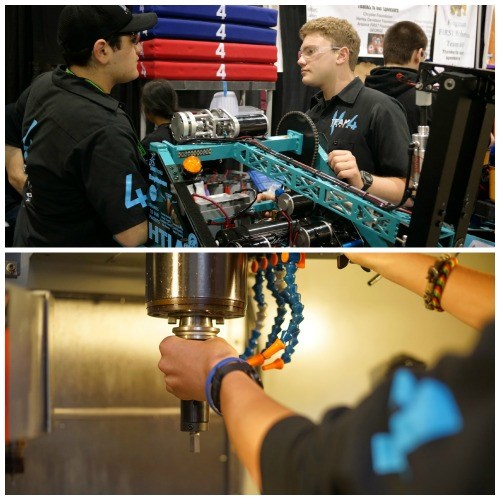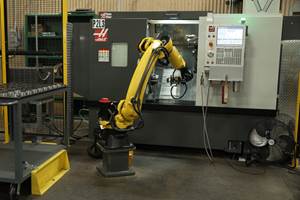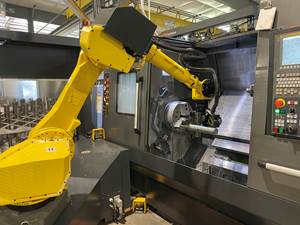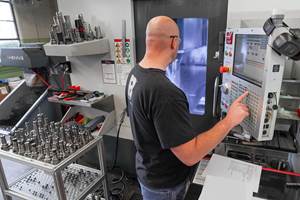What’s Rotary Broaching, and How Did It Help a Robotics Team?
Rotary broaching enables CNC machines to create internal and external shapes such as squares, hexes and serrations. Slater Tool contributed its broaching technology to help a Los Angeles charter school program more effectively create components for a competition robot.
Share






Many external and internal shapes can be created via rotary broaching, as demonstrated in this from , a designer and manufacturer of rotary broaching tools. A fast and efficient machining method, rotary broaching is used for making squares, hexes, serrations, keyways and a range of many other shapes into or onto a workpiece using any CNC lathe, mill or Swiss-type.
Recently, Slater Tools’ rotary broaching technology proved particularly helpful to High Tech Los Angeles (HTLA), a small, college-prep public charter school located in Southern California. Ranked as the state’s leading charter, HTLA uses technology to teach and inspire students. One way it accomplishes this is through after-school clubs such as the Robotics Team. This club teaches students the design and construction of robots, requiring teamwork and intellectual problem-solving skills. Students effectively operate a mini-corporation, running functional departments across multiple disciplines, including project management, design, machining and manufacturing, electronics, programming, business and finance, safety, logistics and media.
The HTLA Robotics Team, called Team4Element, participates in FIRST Robotics Competitions (For Inspiration and Recognition of Science and Technology). Under strict rules, limited resources and time limits, teams of students are challenged to raise funds, design a team “brand,” hone teamwork skills, and build and program robots to perform prescribed tasks against a field of competitors.
One of the biggest challenges HTLA Team4Element faced was in machining parts critical to the function and operation of their robot. Parts produced included drive wheels, gears, rotating components, sprockets and arms. The previous machining method was to hand broach parts using an arbor press, which was a very long and difficult process. That prompted Guy Chriqui, the team’s lead mentor, to reach out to Slater Tools for assistance.
When asked to assist in the robot building application for HTLA, the team at Slater Tools knew rotary broaching was the perfect answer to solve the students’ manufacturing problems. Unlike conventional hand broaching, in which a series of stepped polygon forms are pushed through a hole until the desired size and form is achieved, the rotary broach cuts the full form rapidly, one corner at a time.
With the tooling and guidance provided by Slater Tools, HTLA was able to successfully machine the parts it needed for its robot. Using a Haas VF2 VMC, they machined 30 to 40 parts with a ½-inch hex ID using a single Slater rotary broach and a 3700-1 tool holder. Parts were made in a single pass, maintaining good forms and precise tolerances. Given the significant stress placed on the actual components during use, students had to factor into their design the various moving parts, torque requirements, along with the need for tight fittings and secure connections.
The result of HTLA Team4Element’s efforts and collaboration with Slater Tools was a great success. HTLA produced a robot that was 2 × 3 × 5 feet and 150 lbs. Competing in a 50 × 30-foot playing field, the robot traveled at speeds of 6 to 19 fps, picked up and hurled a 2-foot-diameter exercise ball, scored points for passing and getting the ball into the goal. The robot even ran a “pick and roll” maneuver. It met the requirement of running for two minutes controlled by the students, and 15 seconds autonomously. HTLA took fifth place out of 50 teams.
Related Content
Which Approach to Automation Fits Your CNC Machine Tool?
Choosing the right automation to pair with a CNC machine tool cell means weighing various factors, as this fabrication business has learned well.
Read MoreInvesting in Automation, Five-Axis to Increase Production Capacity
To meet an increase in demand, this shop invested heavily in automation solutions and five-axis machines to ramp up its production capabilities.
Read MoreSame Headcount, Double the Sales: Successful Job Shop Automation
Doubling sales requires more than just robots. Pro Products’ staff works in tandem with robots, performing inspection and other value-added activities.
Read MoreMedical Shop Performs Lights-Out Production in Five-Axes
Moving to five-axis machining enabled this shop to dramatically reduce setup time and increase lights-out capacity, but success relied on the right combination of workholding and automation.
Read MoreRead Next
Machine Shop MBA
Making Chips and Modern Machine Shop are teaming up for a new podcast series called Machine Shop MBA—designed to help manufacturers measure their success against the industry’s best. Through the lens of the Top Shops benchmarking program, the series explores the KPIs that set high-performing shops apart, from machine utilization and first-pass yield to employee engagement and revenue per employee.
Read MoreAMRs Are Moving Into Manufacturing: 4 Considerations for Implementation
AMRs can provide a flexible, easy-to-use automation platform so long as manufacturers choose a suitable task and prepare their facilities.
Read More






















